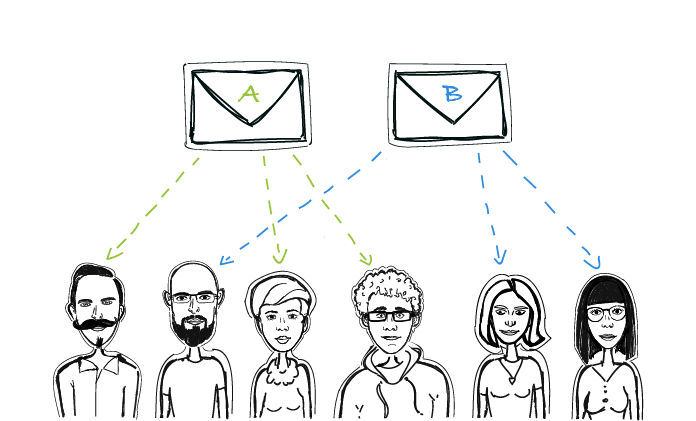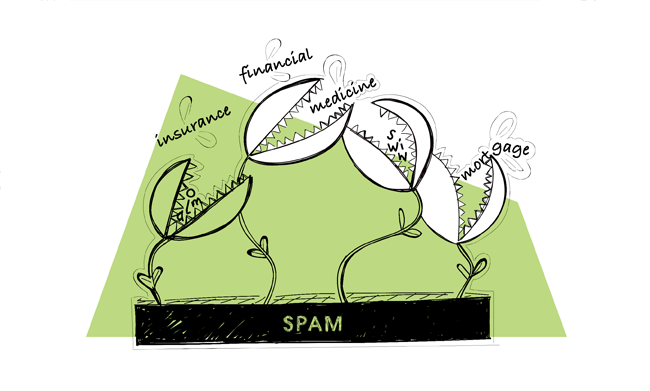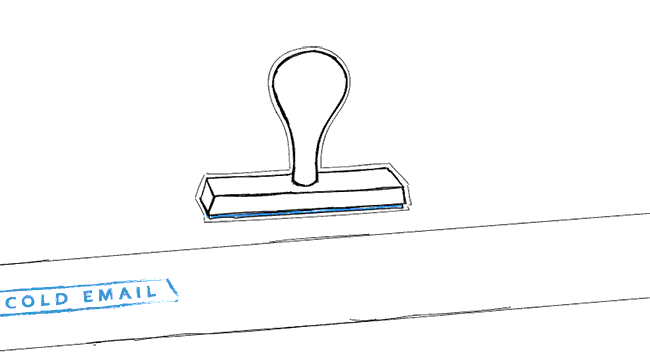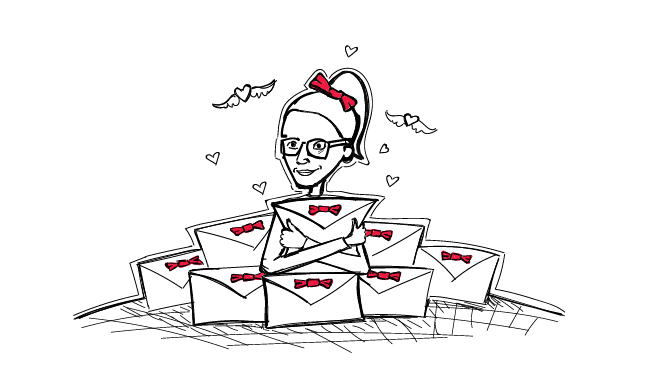Have you ever wondered why most people hate getting cold emails? We always say we hate them, but can we actually tell why? I think that when we realize the reasons why we hate receiving cold emails, we will be able to write and send cold emails that our addressees won’t actually hate. So why, oh why, do we all hate getting cold emails?
Two reasons why we hate getting cold emails
My first guess is: because most of them stink like bulk messages someone didn’t really give a crap about. They just bought a base of contacts, wrote a message that could be distributed as generic leaflets, and then they sent it to us thinking (God knows why) we will actually get interested and reply.
So, in short, I think we hate getting cold emails like that because there are two major clashes involved in the process:
- Reason #1: Someone creates a generic message and sends it to our personal business mailbox, where personal messages usually come.
- Reason #2: Sending that message, someone shows us they don’t give a damn about us at all – while at the same time assuming that we will give a damn about them.
And I believe that’s why we feel annoyed when we see another cold email incoming.
Two rules we can conclude from the above
If we actually realize what the annoying factors of cold email messages are, we can eliminate those factors from our own cold email outreach, so that our addressees won’t get annoyed.
And if we eliminate those the two clashes I mentioned above, we will get two rules we should follow when creating our cold email sequences:
- Rule #1: Create a personal message, because you’re sending it to a personal business mailbox, where personal messages usually come.
- Rule #2: Sending that message, show your addressee that you actually DO give a damn about them, before you assume they will give a damn about you.
What’s in it for you
How do you abide by those rules in practice?
Find out who your prospect really is
In order to send a personal message, it’s crucial to get to know the person we’re sending the message to. We won’t know them in person, obviously, but there are various ways to get to know them as a member of the group of our potential ideal customers.
As soon as we establish our ideal customer profile, we need to do some research in places where our ideal customers talk and exchange views. It’s also a good idea to take a look at some of their social media profiles including Twitter, LinkedIn and/or Facebook. That’s how we discover their interests, pain points, as well as the language they use to communicate with one another. That’s how we can get to know them.
Reach out to an actual person, not a company
A personal message needs to be directed to an actual person. Yes, getting an email to an actual person in a company takes more time and effort, but hey, remember the rule number 2? “…Show your addressee that you actually DO give a damn about them…”, and if you do give a damn, you’re ready to put some effort into finding their email addresses.
For some great tips on the techniques and tools for finding the addresses you need, check this article by Bryan Harris.
And if you are able to spot a chosen person from a company, you can reach out to the decision-maker straight forward. That’s how you can find out if they are interested or not a lot faster. You avoid the “maybes that are slowly killing your start-up” that Steli Efti writes about in his article.
Personalize on a high level
Ok, so as we got the email address of the person we want to contact, it’s not enough to just put their first name in the email salutation, like “Hey Joe,”. If you think it’s enough, think again. How many emails including a personalized salutation followed by a generic message have you received? How many of them did you read and replied to? Even with the name at the beginning, it still looks bulk, doesn’t it?
If we really care about the prospect we are trying to contact, we’ll find more relevant information than just their first name. Remember that even if you’re going to send the message to many people, you are writing to each and every one of them a 1-to-1 kind of message. More on how to personalize cold emails on a high level in the upcoming article.
Use natural and conversational tone
“Good afternoon.
We design, integrate, deploy and maintain any type of solution for Online Presence, Information Management, Control and Communications. Please let us know if you have any requirements for ad hoc projects or a monthly retainer.
Thank you for your consideration.”
Yes, that’s an actual message I got on my mailbox the other day…
That is NOT how you write emails. Actually, I don’t know what you actually write this way. Maybe a description of your company in an official form you need to submit in a tax office or whatever. There are many things wrong about this particular case of cold email outreach, and the stiff tone is one of them.
Email is conversational in nature. Of course it’s crucial to be polite, but in personal email we need to use the language we speak (or the language our prospects speak, for that matter).
The high register does not make the email more professional. It actually makes it dull, heavy and totally impersonal. And here’s when we go back to the rule number 1: “Create a personal message, because you’re sending it to a personal business mailbox …”
Don’t try to make it too pretty
Personal emails and newsletters are two totally different things. Although, I get some great newsletters that feel really personal and I think that’s really cool. But this does not work the other way round, i.e. a cold email you send to someone’s personal business inbox must NOT look like a newsletter. Ever.
If you think that good-looking emails with fancy frames and graphic elements work just because they are good-looking, you should think again. Newsletters are sent in great numbers to a mass of people in definition. Personal emails are sent to a narrow group of specifically chosen people. Cold emails should be personal, hence they cannot look or feel like newsletters.
Newsletters involve an Unsubscribe link. Personal 1-to-1 messages do not include an Unsubscribe link. Ever. Cold emails should be personal, hence they should not include an Unsubscribe link. There are other ways to give your addressees a way out of further correspondence. More about that in one of the upcoming articles.
That’s not all yet
So that’s how we realized why our cold emails should be personal and why we should show our prospects that we actually care about them. In the following articles, I continue on:
- how to get to know your prospects before sending them anything >>
- how to write a cold email that is actually relevant and personal >>
- and how to personalize emails at scale >>
Stay tuned.
READ ALSO

A/B Testing in Cold Email: How to Optimize Our Copy to Get More Replies?
Split tests, or A/B tests, are a well-known method for website’s or newsletter’s copy optimization. But cold email copy also needs constant changes if it is to bring optimal effects. Here’s a little about split testing in cold email: which parts of our email can be tested, how can we test most effectively, what tools can we use for convenient comparison of results?

A Pain of Cold Emailing in Finance and Real Estate: How to Get Through SPAM Filters?
What differentiates cold emailing from other types of 1-to-1 outbound practices is that a huge chunk of a cold emailing process can be automated. You just come up with an email copy, insert a few snippets, add your prospects, and there you have it. A campaign is ready to be sent. You don’t need to send it manually. Still, outreach by email may quickly backfire when you riddle your copy with words that trigger SPAM filters. Words such as ‘insurance’, ‘financial’, ‘medicine’, ‘mortgage’ all alarm SPAM filters. But what if that is the vocabulary you use in your profession on a daily basis? How to avoid going to SPAM then?

Cold Email Clichés, or What Your Prospects Have Seen Too Many Times to Care
If you've been into cold emails for some time, or if you get hundreds of cold emails into your inbox, you are probably able to quote some cliché phrases and structures showing up over and over again for years. I described just a few of them below. Check if you know them. Check if you use them. Check how to replace them, which may probably boost your reply rates.

